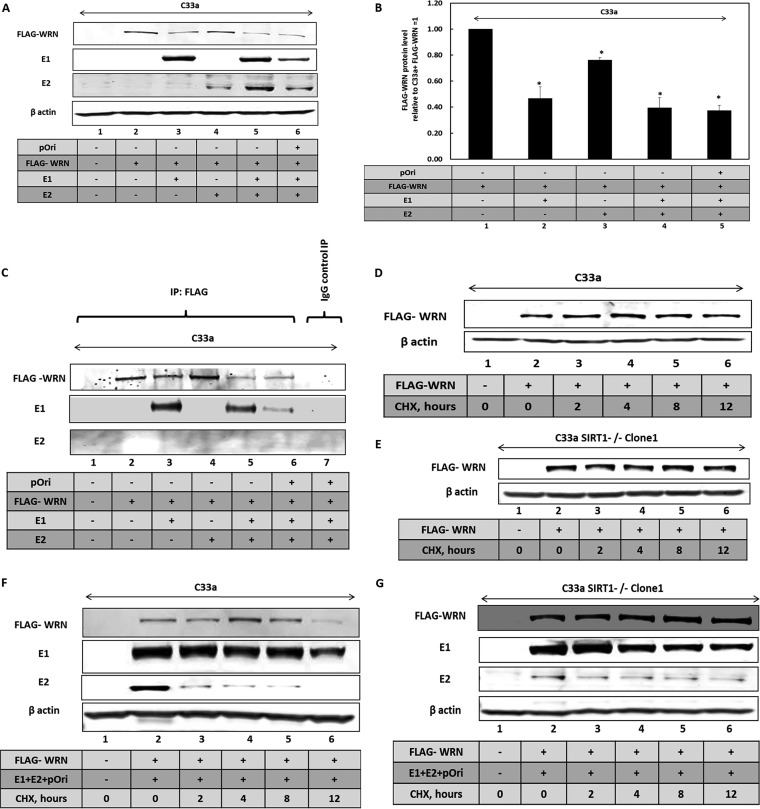FIG 4.
SIRT1 and the E1-E2 replication complex regulate WRN levels. (A) Western blot investigating the regulation of FLAG-WRN levels by E1 and E2. (B) The experiment represented in panel A was repeated, and the results were quantitated. The replication factors significantly downregulate the FLAG-WRN levels, as indicated by an asterisk (P value was less than 0.05; standard error bars are shown). The results of this quantitation for the blot in panel A are shown graphically and represent the summary of results from three independent experiments. (C) The extracts shown in panel A were immunoprecipitated by FLAG and subjected to Western blotting for the indicated proteins. FLAG-WRN interacts with E1 (lanes 3, 5, and 6) but not with E2 (lanes 4, 5, and 6). Lane 7 shows a control immunoprecipitation carried out with rabbit serum, and no immunoprecipitation of the viral factors is observed. (D) FLAG-WRN was transfected into wild-type C33a cells, and cycloheximide was added for the indicated time periods prior to cell harvesting and Western blotting of protein extracts. (E) FLAG-WRN was transfected into C33a SIRT1–/– clone 1 cells and cycloheximide added for the indicated time periods prior to cell harvesting and Western blotting on protein extracts. (F) FLAG-WRN was transfected along with pOri (a plasmid containing the HPV16 origin of replication) and E1 and E2 expression plasmids into wild-type C33a cells and cycloheximide added for the indicated time periods prior to cell harvesting and Western blotting on protein extracts. (G) FLAG-WRN was transfected along with pOri (a plasmid containing the HPV16 origin of replication) and E1 and E2 expression plasmids into C33a SIRT1–/– clone 1 cells, and cycloheximide was added for the indicated time periods prior to cell harvesting and Western blotting on protein extracts.

